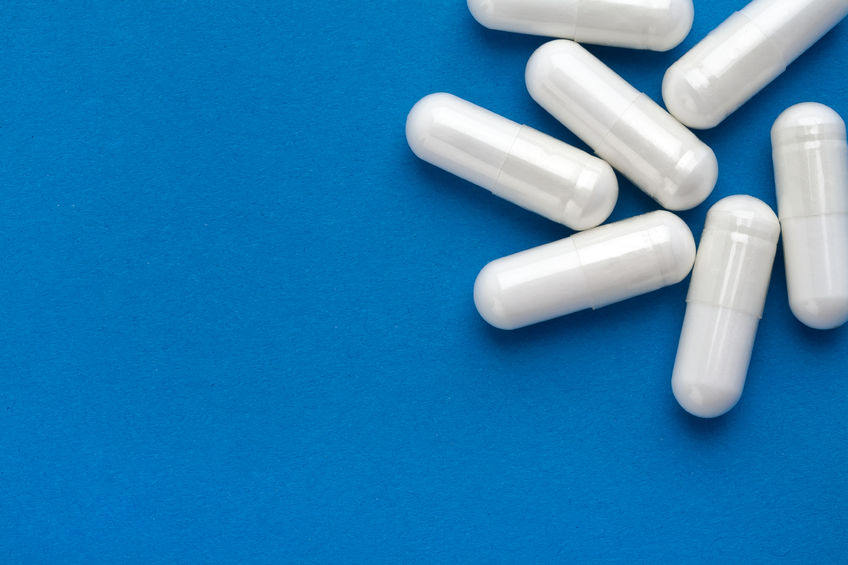Encapsulation of products from pharmaceuticals and nutraceuticals, to vitamin and dietary supplements represents one of the most popular means of formulation today. While certain requirements overlap, setting up a capsule filling line for a product differs greatly from a tableting operation.
If your product’s ideal formulation is a capsule, there a few things you should consider before manufacturing. While each of these points will vary depending on your application, taking them into consideration before you implement a large-scale capsule filling line can help you reduce production errors and cut costs.
Humidity
Environmental conditions, such as humidity, can have a significant impact on the quality of your finished capsules. If the humidity in the capsule manufacturing environment is too high, capsule will fail to dry properly, leading to inconsistencies between products and higher rates of non-compliant capsules.
Conversely, if the drying environment is too low in humidity, capsules may stick to surfaces due to static electricity. Regional climatic changes can complicate matters by introducing variable periods of high or low humidity.
“Areas such as Asia tend to be very challenging because it can be hard to ensure consistent manufacturing conditions in such a tropical climate,” said Martin Ginty, Industry Manager, Pharmaceutical, for the air treatment company, Munters. “In Western Europe and North America you’ll find that you have very stable dry winter periods when the requirements of dehumidification may be lower, but as soon as you come into the summer cycle you may suddenly have difficulties in manufacturing that you didn’t experience previously.”
Ginty recommends implementing humidity control solution that adjusts to local climatic conditions. By removing environmental conditions as a variable in the capsule filling and drying process, manufacturers can ensure a greater degree of consistency in their product.
Capsule Material
Manufacturers have the option of choosing between a number of different capsule materials for their filling operation. Two-piece gel encapsulation uses hard capsules made of gelatin or other easily-dissolved material to enclose the pharmaceutical product. These hard caps come in two halves – the body and the cap – into which powders or pellets are filled.
Soft capsules are filled via a single-piece gel encapsulation method. These softgels are often filled with liquid drug products, which can increase the bioavailability for poorly-soluble drugs.
The majority of soft capsules are made of gelatin or hydroxypropylmethyl cellulose (HPMC), each of which requires a different set of drying conditions. Gelatin capsules have a higher moisture content, making them sensitive to over-drying, whereas HPMC capsules can withstand more aggressive drying conditions. If the material being filled inside the capsule is hygroscopic, it may be advisable to choose a capsule material with a lower water content to prevent unwanted changes to the filling material.
Filling Equipment
Of course one of the biggest considerations for pharmaceutical manufacturers is the choice of capsule filling equipment. For soft capsules, die rollers with a hopper are often used to fill the pre-formed capsules with the liquid preparation.
The pressure exerted by the die rollers seals the seam that runs all the way around each softgel. The drying time of these capsules can vary from a few hours to a days.
Hard capsules can be simply filled with loose powder or granules and assembled by combining the two halves. Alternatively, a given weight of powder can be compressed in a mold and inserted into one side of the hard capsule.
Storage
Depending on the type of capsule being manufactured, storage conditions can vary. As with drying conditions, soft capsules must be stored in a humidity-controlled environment to prevent unwanted moisture from affecting the quality of the finished product.
If moisture becomes trapped in capsule storage bags, temperature variations could lead to accumulation of condensation inside the bags. Because of the potentially damaging effects of fluctuations in temperature and humidity, storage conditions for finished capsules should be clearly defined and monitored.
Dosage Form
The finished dosage form of your product, and whether it contains liquid, powder or granules, is also an important consideration when it comes to capsule manufacturing. Prior to filling, active pharmaceutical ingredients (APIs) and other ingredients should be stored based on their ideal environmental conditions.
However, once the filling material has been encapsulated, the capsule material should largely dictate the drying and storage solutions for the final product. Since the capsule forms a protective barrier around the active ingredient inside, the environmental conditions need only be optimized to maintain the strength and mechanical integrity of the capsule.
An incredible amount of R&D goes into pharmaceutical formulation, with encapsulation being one of the best forms in terms of bioavailability and ease of administration. By taking these variables into consideration throughout the product development process, pharmaceutical manufacturers can ensure that their capsule filling line will be established as efficiently as possible.
For more information on the importance of maintaining consistent conditions for the production of capsules, register for Munters’ webinar on, “Are Humidity Fluctuations Compromising Your Capsule Quality?”
Have we missed any important considerations for pharmaceutical companies looking to start making capsules? Share your views in the comments section below!
This article was created in collaboration with the sponsoring company and the Xtalks editorial team.









Join or login to leave a comment
JOIN LOGIN